What types of batteries are used in today’s EVs?
Mainstream EVs use NMC, NCA, and LFP lithium-ion batteries. Emerging types include solid-state, sodium-ion, and lithium-sulfur.
When you hear people talking about how bidirectional charging affects an EV battery, its typical lifespan, or the ideal maximum state of charge, you might naturally assume there’s just one type of battery that reacts the same way to all conditions. But that’s not true.
Today, electric cars use 3+ different types of batteries, and many more are undergoing testing for future use. Keep reading to discover why any discussion about “the battery” is misleading unless you specify which type you’re talking about.
The most common EV batteries today are lithium-ion types: NMC, LFP, and NCA.
Emerging technologies like solid-state, sodium-ion, and lithium-sulfur promise higher range, faster charging, and lower costs, but are not yet widely commercialised.
Unlike NMC and NCA, LFP batteries can be charged from 20% to 100% without harming the battery.
Frequent use of DC fast chargers can shorten the lifespan of all types of popular EV batteries.
Battery production costs are dropping fast, with average packs now below $100 per kWh.
China dominates the EV battery industry, controlling most raw materials and global production.
Jump to the topics that interest you the most
The main types of electric car batteries include lithium-ion: NMC (Nickel Manganese Cobalt), LFP (Lithium Iron Phosphate) and NCA (Nickel Cobalt Aluminium). Emerging types are solid-state, sodium-ion, and lithium-sulfur batteries, which have potential but are still underdeveloped, along with several others.
All EV battery types differ in chemistry, energy density, cost, lifespan, and safety. These factors influence charging behaviour, overall reliability, thermal stability, and recyclability.
The most popular electric car batteries are NMC (Nickel Manganese Cobalt). They balance cost, range, and performance, which makes them the optimal choice for mid- to high-range electric cars.
The second most popular choice among EV manufacturers is LFP (Lithium Iron Phosphate) batteries. They are safe, durable, and affordable. All in all, ideal for city and budget EVs with slightly lower range. Third place goes to NCA (Nickel Cobalt Aluminium) batteries, which offer high energy density and long range for premium models.
NMC cells combine nickel, manganese, and cobalt to create a versatile battery chemistry. They’re extremely common in EVs, especially European and Asian models. Cars like the BMW iX3 and Volkswagen ID.3 rely on NMC, and it’s also used in many plug-in hybrids.
A lithium-ion NMC car battery is predicted to last for 1000 - 2000 charge cycles (8 - 10 years of driving). Yet, an ADAC test of the VW ID.3 revealed that even after 160,000 kilometres, the battery still had 91% of its original capacity. For context, the average driver covers 12,309 kilometres per year**. At that pace, it would take over 13 years and many more charging cycles than predicted to reach 160,000 kilometres. Well beyond expectations!
Composition: Lithium, Ni, Mn, Co
Energy density: 100 to 265 Wh/kg*
Maximum range potential: 1000+ km
Used in: BMW iX3, Audi A6 Avant e-tron, Fiat 500e, VW ID.3
* watt-hours per kilogram
** German Federal Motor Transport Authority (KBA) in 2024
Manufacturers like NMC because it ticks most boxes. The self-discharge rate of these electric car batteries is around 2% a month, which is considered low. But most importantly, NMC gives enough energy density for a decent range (several hundred kilometres) without being as costly as pure NCA. Moreover, the battery is becoming cheaper every year. By 2024, the cost of lithium-ion batteries fell 20% to $115 per kWh.
But if the lithium-ion batteries were perfect, we would end the article right here. So, what are the downsides? Mining cobalt is expensive and comes with ethical issues. Add in the fact that extreme heat or cold reduces performance, and you see why automakers have to add complex cooling and heating systems. These work, but they increase cost, weight, and complexity.
Myth-busting: NMC batteries are easily flammable
NMC batteries contain a liquid electrolyte that transports the ions from the cathode to the anode. The liquid electrolyte is flammable, and a burning battery is difficult to extinguish. That being said, the fire risk in EVs is around 60 times lower than in cars with combustion engines.
NMC batteries have been around for decades. They went through plenty of experiments and research. The very same ones are also used in smartphones, by the way. But even though the technology is mature, there is still plenty of room for improvement. For example, the volumetric energy density of lithium-ion batteries grew more than eightfold between 2008 and 2020.
LFP uses lithium iron phosphate instead of nickel or cobalt. This makes these electric car batteries cheaper, safer, and more durable. With over 2,000 charge cycles possible, LFP can outlast the car itself and can be used for bidirectional charging with fewer concerns about its lifespan. Automakers like Tesla, BYD, and Ford use LFP for lower-priced or city-focused models. It’s particularly popular in China, where safety and affordability drive EV adoption.
Composition: Lithium, Fe, P
Energy density: 90 to 160 Wh/kg
Maximum range potential: 600 - 700 km
Used in: Tesla Model 3 with the Rear-Wheel Drive (RWD), BYD Atto 3, MG4, Dacia Spring Electric
The main benefit is peace of mind: LFP doesn’t overheat easily and is highly resistant to fire. You’ll also appreciate the affordability of car models where it is present, as the battery packs are noticeably cheaper. In September 2024, they cost around $60 per kWh, a drop of almost 20% compared to the previous year. For instance, the BYD Dolphin and base Tesla Model 3 are affordable yet practical. Half of the voters in our YouTube community consider that price should be the top priority for the battery of the future.
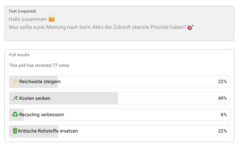
But yes, you do lose out on range. LFP batteries are bulkier and heavier for the same capacity compared to NCA or NMC. That means long road trips aren’t their strong suit. Cold weather is another weak spot, meaning you’ll find range drops significantly on frosty days. Still, for city cars and budget-conscious drivers, LFP delivers incredible value.
Good to know:
LFP batteries are sometimes labelled L(M)FP. This means they include manganese, forming Lithium Manganese Iron Phosphate. Adding manganese increases energy density while keeping the battery safe and long-lasting. This translates into a slightly longer range.
NCA chemistry combines nickel, cobalt, and aluminium. The batteries are less common than NMC and can be found in high-performance EVs such as the Tesla Model S and Lucid Air. This chemistry is all about maximising range and efficiency. If a car can realistically travel 500+ kilometres on a single charge, NCA is often the reason why.
An independent Aviloo test of the 7-year-old Tesla Model S showed that after 88,695 kilometres, the battery still retained 87% of its original capacity. So, the cycle life is pretty solid too.
Composition: Lithium, Ni, Co, Al
Energy density: 200 to 300 Wh/kg
Maximum range potential: 1000+ km
Used in: Tesla Model S, Tesla Model X, Tesla Cybertruck, Lucid Air
The big win here is range and energy density. NCA packs more watt-hours per kilogram, which means longer trips without extra weight. That’s why Tesla uses it for its Model S and Model X with long-range and performance. You might have noticed that premium cars advertise not only their horsepower but their range, both often powered by NCA.
Of course, this comes at a cost. NCA relies heavily on cobalt, making it expensive and tied to supply chain risks. It’s also more sensitive to overheating than other lithium-ion chemistries, which is why cars using it need robust cooling. For buyers, this means higher prices, not just for the car, but also for battery replacement.
Would you like to see the interactive graphic?
Allows the integration of AI-generated content. The content is being reviewed actively, but may contain any kind of third party services.
Owners on forums go back and forth on this all the time: “I always charge to 100% and it’s fine” vs. “Never go over 80% unless you want to kill your pack.” Both sides are right, but only for specific battery types.
Battery type | Daily charge range | 100% charging | DC/HPC Tolerance | Thermal management tip |
|---|---|---|---|---|
NMC | 20 - 80% | For long trips only | Sensitive, use DC / HPC sparingly | |
LFP | 20 - 100% | Safe & recommended | More tolerant, but AC is still kinder | Can operate 0 - 45°C safely. Preheating recommended below 0°C. Avoid >50°C for long-term health. |
NCA | 20 - 80% | For long trips only | Sensitive, use DC / HPC sparingly | Maintain 20 - 30°C. Precondition below 15°C. Avoid fast charging <0°C. Avoid prolonged >45°C exposure.. |
One of the top tips for a long and healthy car battery life: opt for AC charging whenever possible. For instance, wallboxes like our go-e Charger Gemini 2.0 or Gemini flex 2.0 keep charging gentle and battery-friendly. Using DC fast chargers occasionally is fine, but frequent use can shorten your battery’s lifespan.
Next-gen EV batteries use solid-state for longer range and fast charging, sodium-ion for affordable urban use, and lithium-sulfur for lightweight, high-energy packs. Each has trade-offs in cost, cycle life, or commercial readiness.
Myth-busting: Solid-state batteries are just around the corner.
Fact: They’re super promising. Faster charging, safer, and more energy-packed than today’s batteries — a dream! But solid-state batteries are still in R&D. Don’t expect them in your next car just yet.
Almost all major EV manufacturers are betting on solid-state. VW expects commercial use around the end of 2025, with promises of a 30% range boost and halved charging times. Mercedes began road testing in 2025 with an EQS prototype targeting 1,000 km on a single charge, using its patented floating cell carrier.
Composition: Lithium + solid electrolyte (ceramic/polymer)
Energy density: up to 400 Wh/kg
Maximum range potential: Expected to be over 1,000 km.
Manufacturers see huge potential: smaller, lighter packs, higher energy density, and charging in minutes instead of hours. Safety is also better as no liquid electrolyte means much lower fire risk. In terms of range, this battery could mean an affordable mid-sized EV reaching 800 km or more. Recently, Mercedes-Benz showcased the potential of solid-state battery technology by driving a modified EQS test vehicle 1,205 km from Stuttgart to Malmö without recharging, with an additional 140 km of range still available.
But solid-state isn’t a magic bullet. Costs are still very high, scaling production is tricky, and the tech is fragile at large cell sizes. Plus, liquid lithium-ion has a three-decade head start, with mature supply chains and proven reliability. Experts expect solid-state to arrive first in premium cars where customers are willing to pay for the benefits, before trickling down to mass-market EVs.
Good to know:
In our YouTube poll, 41% of people chose solid-state batteries as the future of electric cars — the exact same share as those who bet on lithium-ion.a
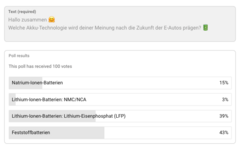
Sodium-ion batteries swap lithium for sodium, cutting reliance on critical minerals. With energy density around 100 - 160 Wh/kg, they can’t match lithium-ion for long range, but costs are dramatically lower. CATL announced its first sodium-ion packs in 2021, and BYD is expected to launch sodium-powered EVs soon. There are already Chinese models from less-known brands with sodium-ion batteries, including the JAC Yiwei 3 (not available in Europe) and the JMEV EV3 (limited availability within Europe).
The appeal is obvious: affordability and supply security. Sodium is everywhere (seawater, common minerals), so there’s no supply crunch. These electric car batteries also perform better in cold weather than LFP, which makes them interesting for northern markets.
Energy density is the sticking point, though. Sodium-ion packs are bulkier and heavier, so they’re not suited for long-range EVs. Cycle life also needs improvement compared to LFP. So, while cheap and safe, they’re unlikely to replace lithium-ion across the board as they are more suitable for city runabouts and not highway cruisers.
Lithium-sulfur batteries are experimental but highly promising. They’re lightweight and use sulfur, which is cheap and abundant. But stability and cycle life remain big hurdles.
Lithium-sulfur tech has been researched for decades, with claims of energy densities over 500 Wh/kg (double lithium-ion). NASA even tested the batteries for aerospace because they’re so lightweight. However, the “polysulfide shuttle effect” leads to quick capacity loss, which has blocked commercial EV use so far.
If the development goes well, lithium-sulfur could mean EVs with 1,000+ km ranges and much lighter packs. Costs would also be lower since sulfur is very cheap compared to cobalt or nickel. That’s why research labs and startups keep chasing breakthroughs here.
Unfortunately, the cycle life is poor. Sometimes, fewer than 100 charge cycles are required before significant capacity losses. That makes them unusable for real-world cars today. Stability and degradation are the key barriers, so don’t expect lithium-sulfur in dealerships soon.
Zinc-air, aluminium-ion, and other exotic chemistries are often mentioned as “wild cards.” They use cheap, abundant materials and promise big leaps in sustainability and cost. However, they’re mostly at the lab or pilot stage, far from powering your next EV.
Zinc-air batteries generate electricity by exposing zinc to oxygen, which makes them cheap and light. Aluminium-ion batteries, meanwhile, are touted for ultra-fast charging potential. Both are still in research or niche uses, like hearing aids or grid storage.
The big attraction is sustainability, as zinc and aluminium are abundant, cheap, and safe. If performance is improved, these chemistries could provide clean, affordable EV power without rare metals or fire risks.
Right now, they’re impractical for cars. Limited recharge cycles, poor scalability, and technical issues prevent commercial rollout. For the moment, zinc-air and aluminium-ion are exciting for researchers, but they’re a “maybe one day” technology for EVs.
Early EV batteries relied on Nickel-Metal Hydride (NiMH) and lead-acid. NiMH-powered the first hybrids with better safety and lifespan than lead-acid, but low energy density limited range. Lead-acid powered early EVs: cheap and reliable for small loads, but too heavy and low-capacity for modern EVs.
NiMH became famous with the Toyota Prius in the late 1990s and was the dominant hybrid battery technology for years. They’re still used in some non-plug-in hybrids today, but pure EVs moved away from NiMH quickly. Energy density is only around 60 Wh/kg, which is far below that of lithium-ion, which easily reaches 200 Wh/kg.
Lead-acid batteries date back to the 19th century and once powered early EVs like the Baker Electric. They store around 30 Wh/kg, which is barely a fraction of lithium-ion. Modern EVs still carry a small 12V lead-acid battery for lights, infotainment, and safety systems, but propulsion is out of the question today. They’re long gone from the EV main stage.
NIO, CATL, BYD, Tesla, and others are advancing EV batteries: cold-resistant sodium-ion, ultra-fast modular, solid-state, semi-solid, and high-energy 4680 cells. Innovations target >1,000 km range, rapid charging, safety, and efficiency, shaping next-gen EVs and mass adoption.
Status: Tested in real-world conditions. Currently available only in China as a rental.
NIO has proven to achieve 1,000 km with its 150 kWh semi-solid-state battery. The battery offers very high energy density but is extremely expensive, which is about the same cost as a full NIO ET5 sedan. Because of this, NIO does not sell the battery; instead, it’s offered for daily rental through its “Battery as a Service” (BaaS) program.
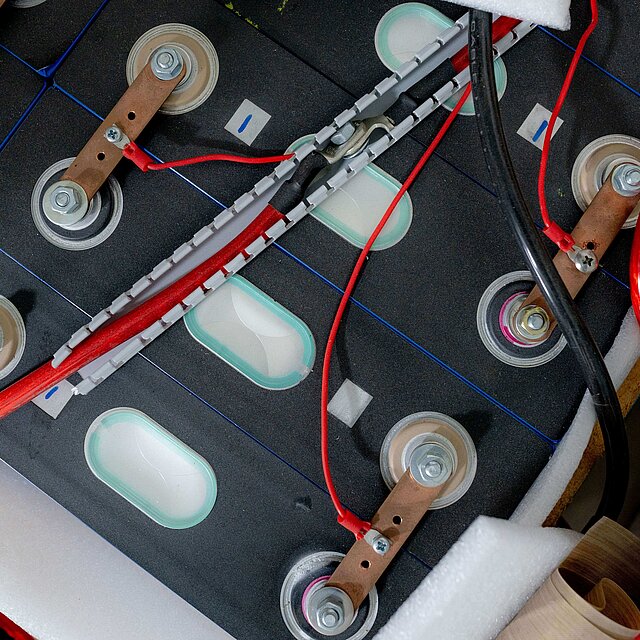
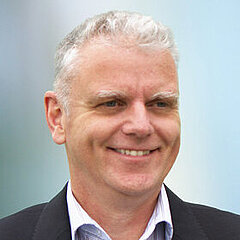
Bart Scholte Van Mast, Business Innovation Manager in Business Development at go-e…the so-called “inferior” batteries meet 90% of needs
The current obsession with range is misplaced, driven by comparisons with ICEs. Once we separate use cases, it becomes clear that so-called “inferior” batteries meet 90% of needs, while the remaining 10% cannot be solved even with the most advanced designs.
Status: Naxtra sodium-ion cell and Shenxing Gen2 are market-ready. The Freevoy modular system is already being adopted by Chinese EV manufacturers.
Chinese battery manufacturer CATL has come up with three new battery systems in 2025.
The Naxtra battery is described as the first mass-producible sodium-ion cell that offers an energy density of 175 Wh/kg and retains 90% of its power at -40 °C. The battery supports over 10,000 charge cycles and is currently ready for mass production.
The second-generation Shenxing battery, which was recently presented at the IAA 2025 in Munich, can charge from 5% to 80% in 15 minutes at -10 °C. It is expected to provide a range of 800 km. According to CATL, the batteries are ready for market, and EV manufacturers could order and install them immediately.
The Freevoy Dual-Power Battery combines two energy zones in a modular system. This allows the use of multiple chemistries, such as sodium-ion, LFP, or NCM cells, to meet varying driving needs. Chinese EV producers such as Geely, Chery, and several others have already begun incorporating the Freevoy battery into their vehicles and are preparing to launch them in the near future.
Status: Currently, in the R&D phase. Successfully demonstrated at IAA Mobility 2025. Milestone toward series production, with EV applications next.
QuantumScape and PowerCo just powered a Ducati motorcycle with solid-state lithium-metal batteries live on stage at IAA Mobility 2025. These batteries are special because they don’t use the traditional graphite “anode” found in most lithium-ion batteries, which makes them safer, more energy-dense, and longer-lasting. The bike performance was presented as “a milestone from the lab to series production.” For EVs, such a battery means you could drive farther on a single charge, recharge from 10% to 80% in just 12 minutes, and enjoy strong, continuous power.
Status: Early testing in the Seal sedan. Limited-run production possible by 2027. Mass rollout targeted for 2030.
We bet you’d be surprised not to find BYD mentioned here. This Chinese manufacturer is making big moves, opening a factory in Hungary, introducing extremely affordable EV models with decent range and introducing touch competition for European car brands. While barely anyone knew about it five years ago, today BYD is mentioned in nearly every discussion about affordable yet capable electric vehicles. So, here it is, we’re mentioning it too.
Right now, BYD is testing its first-generation solid-state battery in the Seal electric sedan. If it works as planned, this battery could deliver up to 1,500 km of range (NEDC) and charge in about 12 minutes, thanks to an energy density of 400 Wh/kg, which is more than double their current Blade battery. Keep in mind, though, that NEDC estimates tend to be about 22% more optimistic than the more realistic WLTP standard EV manufacturers are required to use today.
The tests for the BYD battery are expected to continue until around 2027, with limited-run production models potentially appearing by then and full-scale integration planned for 2030. If successful, this could dramatically reduce range anxiety and further strengthen BYD’s position as a global EV leader.
Status: In production and already used in the Tesla Cybertruck.
Tesla has always done things a bit differently by using cylindrical battery cells. In comparison, BYD’s Blade battery uses prismatic cells that focus on safety, heat management, and cost, while brands like Volkswagen, BMW, and Hyundai generally use pouch or prismatic cells for easier packaging and better thermal control. What’s new is Tesla’s 4680 cell, a big upgrade from the older 2170 cells (2.1 cm × 7.0 cm). These larger cells store 272 Wh/kg (BYD’s Blade battery stores 160 Wh/kg), which means for you as a driver, longer range, smoother and stronger acceleration, and fewer stops for charging. Tesla also buys some pre-made electrodes from LG to speed up production and reduce costs, making their cars more available and affordable.
Toyota plans to launch next-generation BEVs in 2026 featuring a diverse range of advanced electric car batteries (lithium-ion and solid-state designs) offering faster charging, longer ranges of up to 1000 km, cost reductions, and optimised vehicle aerodynamics, with solid-state mass production targeted for 2027–2028.
Mercedes-Benz, in collaboration with Factorial Energy, has integrated a lithium-metal solid-state battery into a modified EQS. It enables up to 25% longer range, improved safety, lighter weight, and higher efficiency. The changes make the first real-world road test of automotive-scale solid-state technology with a potential range exceeding 1,000 km, which seems to be a magical number most brands are aiming for.
BMW Group is launching its sixth-generation eDrive technology with 800V high-voltage batteries and a modular, technology-open electric drive system. It is promised to deliver up to 30% faster charging, 30% greater range, 20% improved overall efficiency, and flexible motor configurations. Global battery assembly and production are planned for 2026.
The best EV battery type overall is NMC. Its high energy density makes it perfect for city driving, longer trips, and high-performance EVs. The batteries are proven, recyclable, and keep vehicles performing well on extended journeys, though cobalt can raise ethical and price concerns.
For budget-friendly or city-focused models, LFP is still a solid option. It’s safe, durable, easy to recycle, and can last over 3,000 charge cycles. The range is a bit lower, but it’s more than enough for everyday driving.
In the future, solid-state and other emerging battery types could surpass current technologies, but that future is still a long way off.
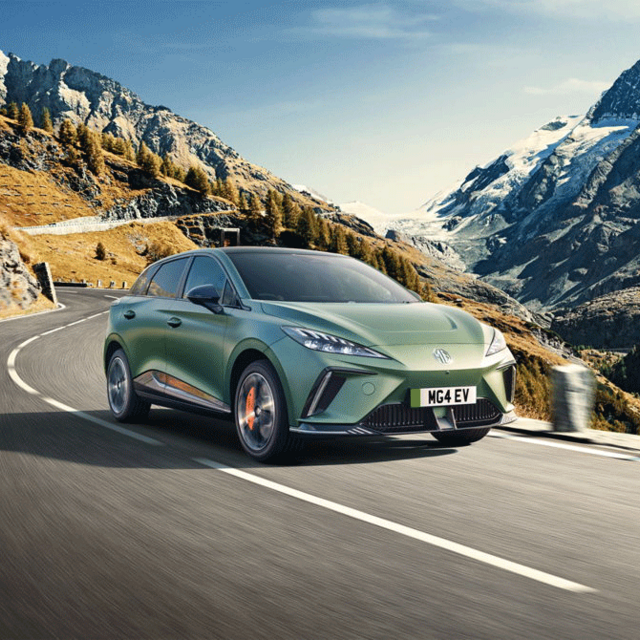 ©
MG Motor Deutschland
©
MG Motor Deutschland
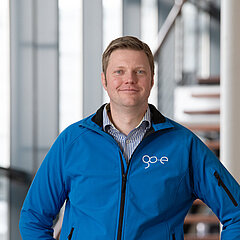
Ronald Kroke, Head of Marketing at go-eThe race between battery types is still undecided
I am very satisfied with the performance of the battery in my IONIQ 5, and numerous tests have shown that lithium-ion batteries have a very long lifespan. Solid-state batteries still have to prove themselves in this regard, as I believe that errors when charging lead to faster performance losses. However, their advertised fast charging performance and long range will probably make this type of battery the preferred choice in the future.
The battery world is changing fast, and if you follow EV news, you’ve probably noticed how quickly prices are dropping. In 2024, electric car sales jumped 25% to 17 million, and battery demand shot past 1 terawatt-hour – a milestone people have been talking about on EV forums for months. At the same time, the average battery pack fell below $100 per kilowatt-hour, which is huge for anyone wondering whether EVs will become more affordable in 2026. A big part of that drop comes from cheaper minerals like lithium, which has lost more than 85% of its value since 2022. But it’s not just raw materials. The way batteries are made has gotten way more efficient. Global production capacity hit 3 TWh in 2024, and if all the planned projects actually launch, we could see it triple over the next five years. This progress means more choices and lower prices for people who are thinking about switching to electric.
Today, China has a significant lead, with a battery ecosystem that is at least a decade ahead of other nations. Its estimated market share for processing lithium into lithium chemicals was around 68% in 2024, making the global EV supply even more dependent on China. In the first two months of 2025, the country sold 1.4 million electric vehicles (incl. BEV and PHEV), which represents 58% of the world market.
With this advantage, China dominates global production and exports, while Europe struggles to catch up. European companies are trying to establish over fifty gigafactories, but many face delays or rely on Chinese partners. At the same time, Chinese companies are planting roots in Europe. For example, CATL is building its second European gigafactory in Hungary. It is going to be a $7.6 billion investment to supply automakers like BMW.
Looking ahead, the next five to ten years will see China maintain its lead, but the strategy will likely shift. Chinese companies will increasingly produce vehicles and batteries within Europe. We also expect more protective trade measures and efforts to build a domestic battery industry.
Mainstream EVs use NMC, NCA, and LFP lithium-ion batteries. Emerging types include solid-state, sodium-ion, and lithium-sulfur.
NMC balances cost and range, NCA offers high energy density and long-range for premium cars, and LFP is safe, affordable, and long-lasting, ideal for city EVs.
No. NMC, NCA, and LFP have different chemistry, lifespan, thermal stability, safety, and charging behaviour.
It depends on the battery type. NMC and NCA batteries are sensitive to frequent DC fast charging, while LFP can tolerate it better.
Yes, many manufacturers design batteries to outlast the vehicle, though lifespan varies by chemistry.
Solid-state batteries are innovative EV batteries with a solid electrolyte. They promise a higher range, faster charging, lighter weight, and better safety, but are not widely commercialised yet.
LFP batteries are the safest due to their high thermal stability and low fire risk. Solid-state batteries may surpass them in safety once mass-produced.
Change language
In order to provide the best user experience, we need to use some third party technologies. In the following form, you can set your preferences. If you want to change the preferences later on, you can always do this on our privacy settings page. Here you can find our privacy agreement and contact information.
Necessary cookies and functions are required to use the web-site in its basic form.
A required cookie to store login information for the backend, this is relevant for content managers only.
A required cookie to store your privacy preferences.
Functions extend the basic features of the website, third party technologies will be included and they might also collect information on their own.
Allows displaying map-material (images) from openstreetmap to provide interactive map-features. By allowing this feature, you accept the privacy agreement of openstreetmap.
Allows the playback of videos, that are hosted on vimeo.com. By allowing this feature, you acceot the privacy agreement of vimeo.
Allows the playback of videos, that are hosted on youtube.com. By allowing this feature, you accept the privacy agreement of google.
Allows the integration of Google Maps functionality. By allowing this feature, you accept the privacy agreement of google.
Allows the integration of AI-generated content. The content is being reviewed actively, but may contain any kind of third party services.
This chat uses a cookie to interact with you and maintain your chat history for quality assurance (see our Privacy Policy).
Allows the inclusion of ReCaptcha to helper us identify you as a human person. By allowing this feature, you accept the privacy agreement of google.
These cookies may be set by our partners through our website to profile your interests and show you relevant ads on other websites. The cookies do not store any direct personal data, but can uniquely identify your browser and device. If you do not allow this cookie, you will more often see non-personalised advertising. These cookies are only used with your consent and only as long as you have not deactivated the respective cookie.
One of the marketing cookies we use is Google Analytics, Facebook Pixel and Hotjar. We cannot rule out the possibility that Google Ireland or Meta Irland may pass on personal data to their parent company in the USA and that US security authorities may gain access to data on the basis of current legislation. If you allow marketing cookies, you expressly consent to this data transfer in accordance with Art. 49 (1) DSGVO.
These cookies enable us to determine visits, visitor sources and data on visitor behaviour in order to improve the quality of our website. This enables us to determine, among other things, which pages are the most popular and how visitors move around the website. The information collected is aggregated and cannot be directly attributed to an individual. If you allow these cookies, we can constantly develop the offers on our website according to your wishes.